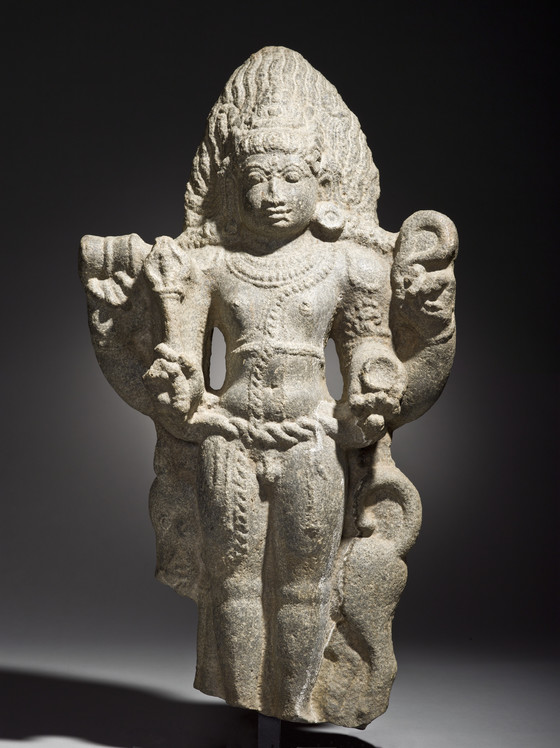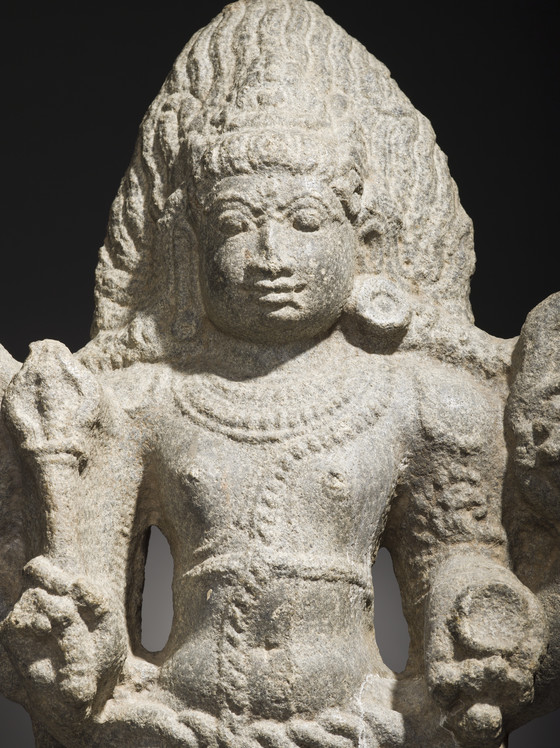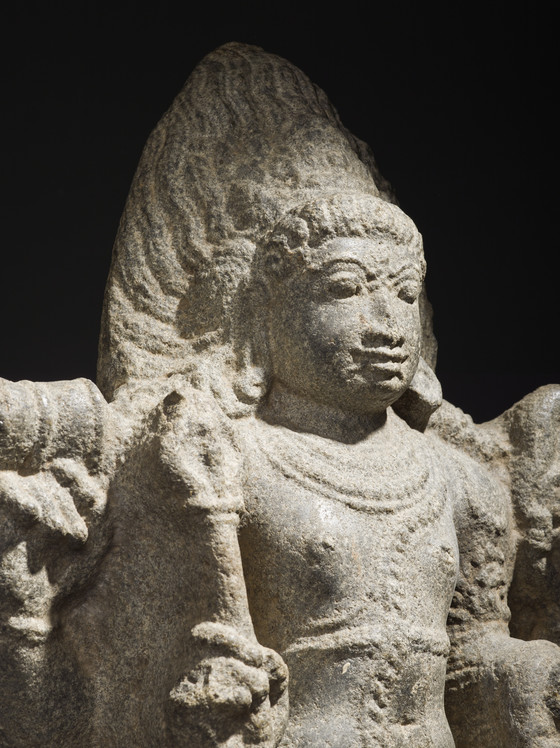Bhairava (frightful) is a violent or powerful (ugra) form of the Hindu god Shiva....
Bhairava (frightful) is a violent or powerful (ugra) form of the Hindu god Shiva. The deity’s creation is told in the lingodbhava myth about the origin of a colossal column of flame arising from the cosmic ocean (see M.74.138.4). According to the myth, Brahma and Vishnu were arguing boastfully over who was the more powerful, when suddenly they came upon the column of flame. Brahma took the form of his mount, a white gander, and flew upward to find the flame's summit. Vishnu sought the fire's origin by diving into the ocean in his boar incarnation (see also M.72.53.8 and M.87.160.2). When neither god could find an end to the column, which was actually a linga (Shiva’s aniconic symbol), Shiva triumphantly emerged from its side and proclaimed his supremacy. Because Brahma had falsely proclaimed to have found the upper origin of the column (which was cosmologically the axis mundi connecting heaven and earth), the enraged Shiva cut off Brahma’s fifth head for lying and was condemned to wander the earth as a naked beggar.
Bhairava is accordingly represented as naked except for his jeweled ornaments, including an ascetic’s sash (yoga patta) worn across his left shoulder and a belt made of entwined serpents. He has Shiva’s third eye of wisdom (jñana netra), and the fierce attributes of bulging eyes, furrowed brows, fangs, and flaming hair that forms a nimbus (see also M.83.48). He has four arms. In his upper right hand, he holds a drum. In his lower right hand, he carries a trident. In his upper left hand, he holds a noose. In his lower left hand, he carries a skull cup as a begging bowl, which is said to represent Brahma’s decapitated head. Bhairava’s mount, a snarling dog (shvan), stands aggressively behind him. See also M.86.338.3.
More...






